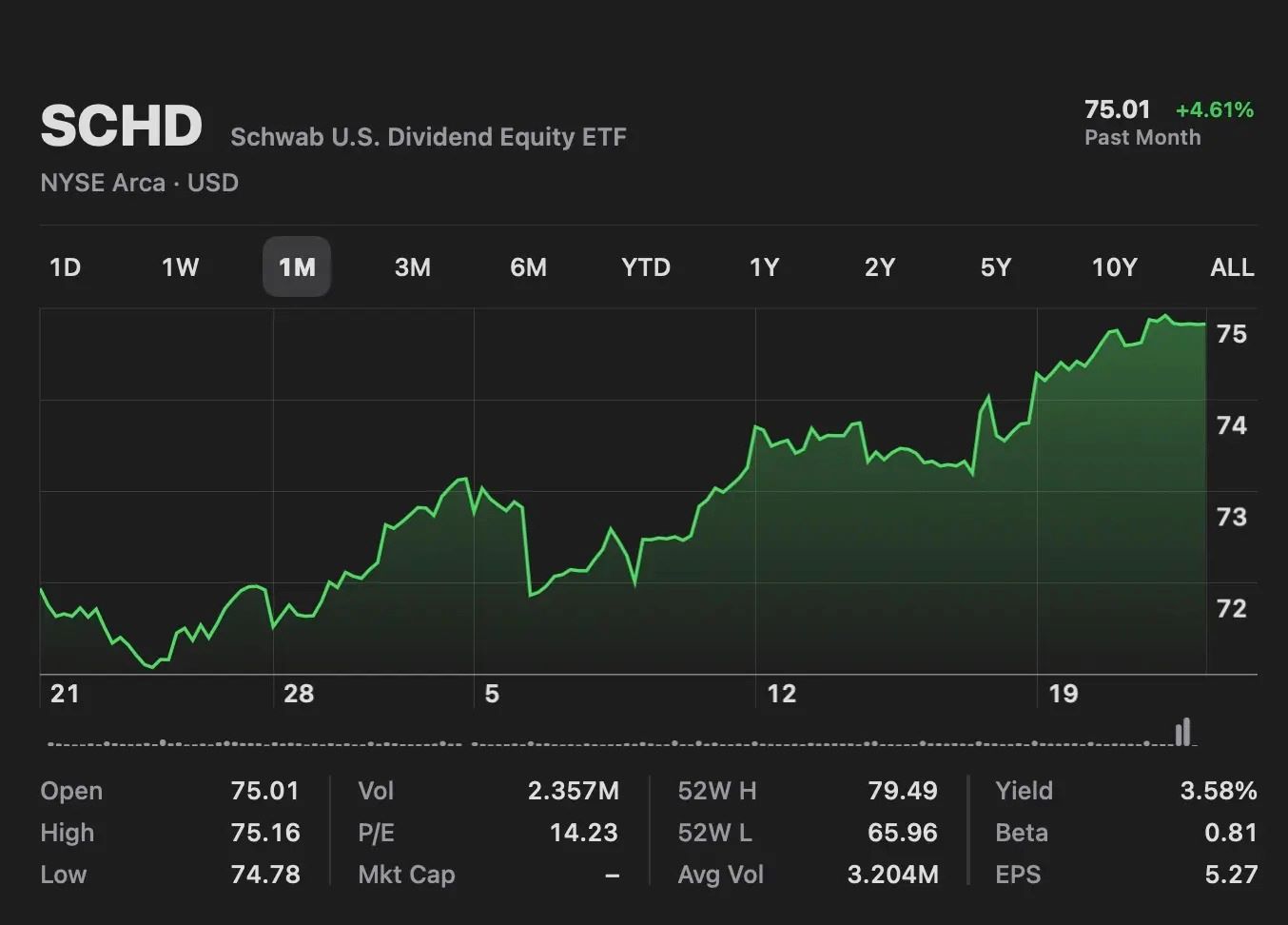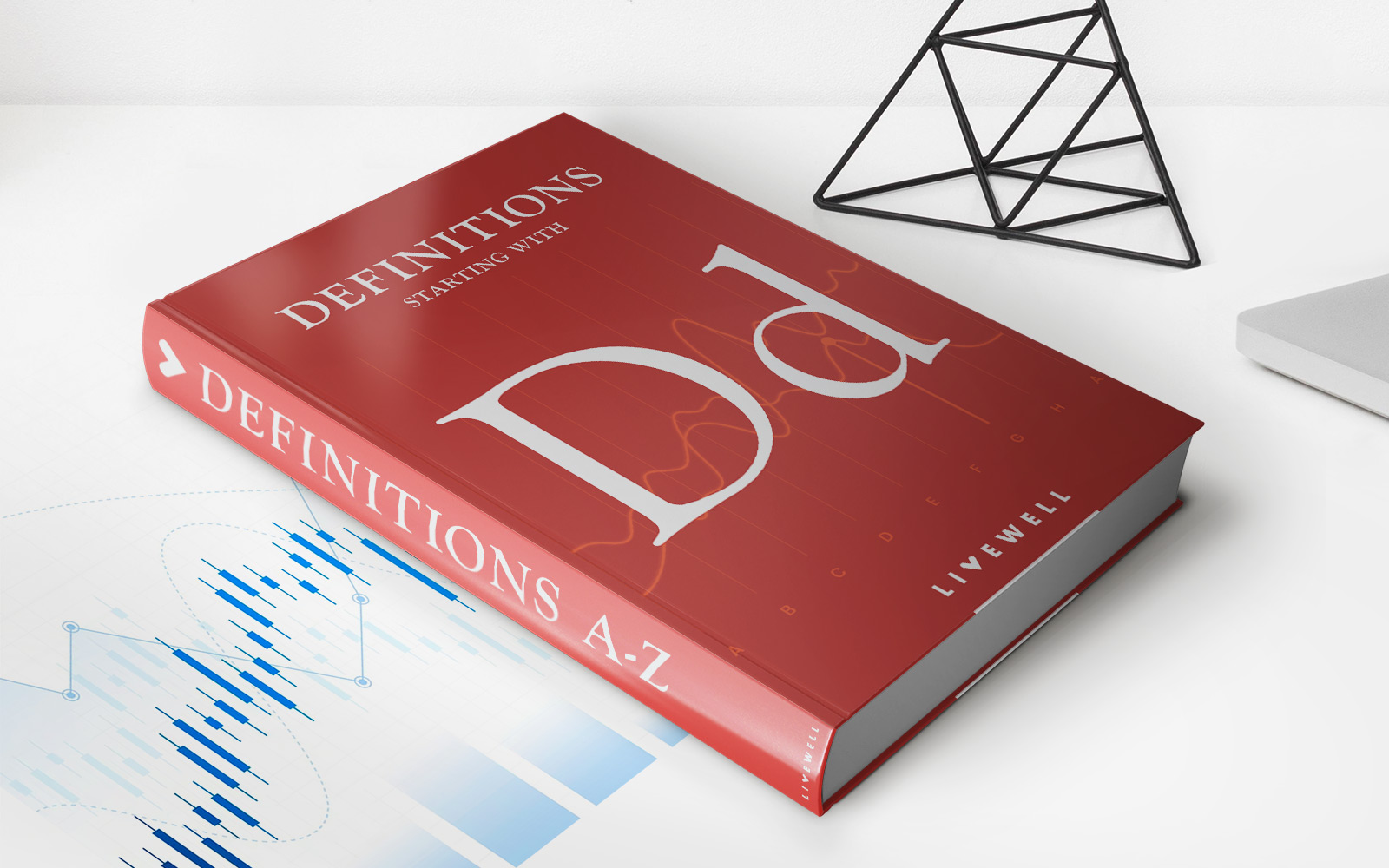

Finance
When Does ARR Pay Dividends?
Published: January 3, 2024
Learn about when ARR pays dividends and gain insights into the finance industry. Find out how dividends are distributed in the world of finance.
(Many of the links in this article redirect to a specific reviewed product. Your purchase of these products through affiliate links helps to generate commission for LiveWell, at no extra cost. Learn more)
Table of Contents
Introduction
When considering investing in a company, one important aspect that investors often evaluate is the potential return on their investment. In the realm of finance, one way to gauge this is by analyzing a company’s Annualized Return on Investment (ARR). ARR measures the profitability of an investment over a specific period of time, usually a year.
However, investors also need to understand when and how ARR pays dividends. Dividends are the distribution of a portion of a company’s earnings to its shareholders. They can provide a steady stream of income for investors while also serving as a signal of a company’s financial health and performance.
In this article, we will explore when and how ARR pays dividends. We will analyze the key factors that influence dividend payment and what investors should consider before investing in a company based on its ARR dividends. It is important to note that each company has its own dividend policy and may distribute dividends at different times and in different amounts.
Now, let’s dive deeper into the world of ARR dividends and explore the various factors that play a role in determining when investors can expect to receive a return on their investment.
Definition of ARR
Before delving into the specifics of when ARR pays dividends, let’s first establish a clear understanding of what ARR is. ARR, also known as Annualized Return on Investment, is a financial metric used to evaluate the profitability of an investment over a specific period of time, typically one year.
ARR takes into account the total amount of money invested and the return generated from that investment. It is commonly used by investors to compare the performance of different investment opportunities or to assess the overall return on a portfolio.
The calculation for ARR is relatively straightforward. It is calculated by taking the ending value of an investment, subtracting the initial investment, and dividing the result by the initial investment. The resulting figure is then expressed as a percentage to provide a standardized measure of return.
For example, if an investor initially invests $10,000 and earns a return of $1,500 after one year, the ARR would be calculated as follows:
ARR = ($1,500 – $10,000) / $10,000 * 100 = 15%
The higher the ARR percentage, the greater the return on investment. A positive ARR indicates a profitable investment, while a negative ARR implies a loss.
ARR is a useful tool for investors as it provides a clear snapshot of the profitability of an investment over a defined period. However, it is important to remember that ARR alone should not be the sole basis for investment decision-making. It should be considered alongside other financial indicators, such as cash flow, profitability ratios, and market trends, to make informed investment choices.
Now that we have a solid understanding of ARR, let’s explore the factors that influence when ARR pays dividends.
Factors That Affect ARR Dividends
When it comes to deciding when and how to distribute dividends based on the company’s ARR, several factors come into play. These factors can vary depending on the company’s financial situation, dividend policy, and overall strategy. Let’s take a closer look at some of the key factors that influence ARR dividends:
- Earnings and Profitability: The company’s earnings and profitability are crucial factors in determining whether it has sufficient funds to pay dividends. Companies with consistent and growing earnings are more likely to distribute dividends to reward shareholders.
- Cash Flow: Cash flow is another critical factor that affects the ability to pay dividends. A company must generate enough cash flow to cover its operational expenses, capital investments, and dividend payments. A positive and stable cash flow provides the financial stability needed to sustain dividend payments.
- Dividend Policy: Each company has its own dividend policy that outlines when and how dividends will be paid. Some companies follow a fixed dividend policy, paying a set amount or a certain percentage of earnings as dividends. Others may have a variable dividend policy that fluctuates based on the company’s performance and available funds.
- Retained Earnings: Retained earnings refer to the portion of a company’s profits that are reinvested back into the business rather than distributed as dividends. A company’s decision to retain earnings can impact the availability and amount of dividends for shareholders.
- Industry and Economic Factors: External factors, such as industry trends, economic conditions, and regulatory requirements, can influence a company’s decision to pay dividends. For example, during periods of economic uncertainty, companies may choose to conserve cash and reduce or eliminate dividend payments to ensure financial stability.
- Growth Opportunities: Companies that are in a high-growth phase or have significant investment opportunities may prioritize reinvesting profits into the business instead of paying dividends. They may believe that by reinvesting the earnings, they can generate higher returns for shareholders in the long run.
It’s important for investors to consider these factors when evaluating a company’s ARR dividends. Understanding how these factors influence dividend payments can provide insights into a company’s financial health, stability, and commitment to rewarding shareholders.
Now that we have explored the factors that affect ARR dividends, let’s move on to discuss the importance of earnings and profitability in determining dividend payments.
Earnings and Profitability
When it comes to determining when ARR pays dividends, the company’s earnings and profitability are significant factors to consider. They serve as key indicators of a company’s financial health and ability to generate sufficient funds to distribute dividends to its shareholders.
Earnings refer to the company’s net income or profits generated from its operations. A company with consistent and growing earnings is more likely to have the financial capability to pay dividends to its shareholders. It demonstrates that the company’s business operations are profitable and sustainable.
Profitability, on the other hand, measures the efficiency and effectiveness of a company’s operations in generating profits. This can be assessed through financial ratios such as the Return on Investment (ROI), Return on Assets (ROA), and Return on Equity (ROE).
Companies with a high ROI, ROA, and ROE are generally considered more profitable and may be better positioned to distribute dividends. These ratios indicate how effectively the company is utilizing its assets and equity to generate profits.
Another important metric to consider is the earnings per share (EPS), which measures the portion of a company’s earnings allocated to each outstanding share of common stock. Companies with higher EPS have the potential to pay higher dividends to shareholders.
However, it is essential for investors to not only rely on earnings and profitability figures in isolation. It is crucial to analyze these metrics in comparison to industry peers, historical trends, and the company’s overall financial performance.
It’s also worth noting that companies may prioritize reinvesting earnings into growth initiatives, research and development, or debt reduction instead of paying out dividends. This is especially true for startups or companies in fast-growing industries that require substantial capital investment.
Ultimately, investors should assess the company’s earnings growth trajectory, profit margins, and profitability ratios to gain insight into its ability to sustain and potentially increase dividend payments over time.
Now that we understand the importance of earnings and profitability in determining dividend payments, let’s explore the role of cash flow in influencing ARR dividends.
Cash Flow
When evaluating when ARR pays dividends, one of the crucial factors to consider is the company’s cash flow. Cash flow provides a clear indication of the amount of money coming in and going out of a business, which directly impacts the company’s ability to pay dividends to its shareholders.
A positive and stable cash flow is vital for a company to sustain dividend payments. It ensures that the company has enough funds to cover its operational expenses, initiate growth initiatives, and allocate a portion of the cash flow for dividend distribution.
Companies with strong and consistent cash flow are generally in a better position to pay dividends. Positive cash flow indicates that the company is generating enough revenue from its core activities to cover its operating costs, debt obligations, and dividend payouts.
It’s important to differentiate between cash flow from operations and cash flow from financing or investing activities. Cash flow from operations represents the cash generated directly from the company’s primary business activities, while cash flow from financing or investing activities includes cash inflows and outflows from activities such as debt issuance, stock issuance, or capital investments.
Analyzing the cash flow statement can reveal whether the company’s cash flow is growing or declining, providing insights into the sustainability of dividend payments. Investors should look for consistent positive cash flow from operations, as it indicates that the company’s core operations are generating sufficient cash to fund dividend payments.
However, negative cash flow from operations does not necessarily imply that the company cannot pay dividends. It may indicate that the company is in a growth phase or has made significant investments in assets or infrastructure, which can benefit shareholders in the long run.
Furthermore, it’s important to assess the company’s cash flow in relation to its dividend payout ratio. The dividend payout ratio compares the amount of dividends paid out to shareholders with the company’s net income. A higher payout ratio indicates that the company is distributing a larger portion of its earnings as dividends, which may have an impact on its ability to invest in growth opportunities.
Overall, understanding a company’s cash flow and its relationship to dividend payments is crucial for investors. Positive and stable cash flow from operations demonstrates the company’s ability to generate cash to sustain dividend payments and potentially increase them in the future.
Next, we’ll explore the impact of dividend policy on when ARR pays dividends.
Dividend Policy
When considering when ARR pays dividends, it is essential to understand the company’s dividend policy. A dividend policy is a set of guidelines and principles that dictate when and how a company will distribute dividends to its shareholders.
Companies have the discretion to establish their dividend policy based on various factors, including their financial performance, growth prospects, industry trends, and shareholder expectations. The dividend policy provides a framework for regularizing dividend payments and ensuring consistency and transparency for investors.
There are different types of dividend policies that companies can adopt:
- Stable Dividend Policy: Companies with a stable dividend policy aim to maintain a regular dividend payout to shareholders. They strive to provide a predictable income stream, particularly for income-focused investors. This type of policy is commonly seen in mature and stable industries, where earnings and cash flows are relatively predictable.
- Growth Dividend Policy: Companies with a growth dividend policy prioritize reinvesting earnings back into the business to fuel growth initiatives. They may pay lower dividends or no dividends at all in order to allocate more funds for research and development, acquisitions, or capital expenditures. Startups and companies in high-growth industries commonly follow this policy.
- Variable Dividend Policy: Companies with a variable dividend policy adjust their dividend payments based on their financial performance, earnings, and available cash flow. The dividend amount may fluctuate from year to year, depending on the company’s profitability and capital requirements.
- No Dividend Policy: Some companies may choose not to pay dividends at all and instead retain earnings to fund future growth opportunities or debt reduction. This is often the case for young and high-growth companies that prioritize reinvestment over immediate shareholder returns.
The dividend policy is typically communicated to shareholders through annual reports, investor presentations, and dividend announcements. It is essential for investors to be aware of the company’s dividend policy and understand the implications it may have on dividend payments.
Investors should also consider the dividend yield, which is calculated by dividing the annual dividends per share by the stock’s current market price. A higher dividend yield implies a higher return on investment from dividends.
Ultimately, understanding the company’s dividend policy is crucial in determining when ARR pays dividends. It provides insights into the company’s financial strategy, growth plans, and commitment to rewarding shareholders with regular income distributions.
Next, we’ll explore the role of retained earnings in shaping when ARR pays dividends.
Retained Earnings
Retained earnings are an important factor that affects when ARR pays dividends. Retained earnings refer to the portion of a company’s profits that are reinvested back into the business rather than distributed as dividends to shareholders.
When a company generates profits, it has the option to either distribute them as dividends or retain them for future use. Retained earnings are accumulated over time and typically reflect the company’s cumulative net income, minus any dividends that have been paid out to shareholders.
Retained earnings play a vital role in determining the availability and amount of dividends a company can pay. If a company has accumulated significant retained earnings, it indicates a history of profitability and the potential to sustain dividend payments even in challenging periods.
Companies with high retained earnings have the flexibility to allocate those funds for various purposes, such as expanding operations, making acquisitions, or investing in research and development. Conversely, companies with low or negative retained earnings may need to rely more heavily on current earnings or external financing to pay dividends.
The decision to retain earnings rather than distribute them as dividends is often influenced by a company’s growth prospects and investment opportunities. Companies in high-growth industries or those undertaking expansion plans may choose to reinvest earnings to fuel future growth and enhance shareholder value.
It is important to note that while retained earnings may indicate the company’s ability to pay dividends, they are not a guaranteed indicator of future dividend payments. The company’s dividend policy, cash flow, and profitability are equally important factors to consider.
Investors should review the company’s financial statements and retained earnings over time to assess the company’s dividend-paying capacity. Analyzing the trend of retained earnings can provide insights into the company’s commitment to long-term growth and its ability to sustain and potentially increase dividend payments.
Understanding the role of retained earnings in dividend payments can help investors gauge the financial strength and stability of a company and make informed investment decisions.
Next, we’ll discuss other considerations that investors should take into account when evaluating when ARR pays dividends.
Other Considerations
When trying to determine when ARR pays dividends, there are several additional factors that investors should take into consideration. These factors can provide valuable insights into a company’s dividend-paying practices and help investors make more informed decisions. Let’s explore some of these considerations:
- Company Size and Stage: The size and stage of a company can influence its dividend payment behavior. Large, established companies in mature industries often have a history of paying regular dividends, while smaller and emerging companies may reinvest earnings for growth.
- Industry Norms: Different industries have varying dividend payment practices. Some industries, such as utilities and consumer goods, tend to offer stable and predictable dividends, while technology or healthcare companies may be more inclined to reinvest earnings for innovation.
- Debt Obligations: Companies with significant debt obligations may prioritize debt service over dividend payments. Investors should assess the company’s debt levels, interest coverage ratios, and debt repayment schedules to understand the impact on dividend payments.
- Legal and Regulatory Requirements: Companies must comply with legal and regulatory requirements regarding dividend distributions. Investors should be aware of any restrictions or mandatory payout ratios imposed by regulatory bodies in the company’s jurisdiction.
- Market Conditions: Economic conditions, market trends, and investor sentiment can influence a company’s decision to pay dividends. During periods of economic uncertainty or market volatility, companies may opt for more conservative dividend policies.
- Management Philosophy: The management’s philosophy and priorities can shape dividend payment practices. Some management teams believe in rewarding shareholders with regular dividends, while others prefer to focus on reinvestment and long-term growth.
Investors should consider these factors in conjunction with the company’s financial performance, dividend policy, and cash flow to gain a comprehensive understanding of when ARR pays dividends. It’s important to remember that dividend payments are not guaranteed and can fluctuate based on various internal and external factors.
By taking these considerations into account, investors can make more informed decisions and align their investment strategies with companies that align with their income objectives and risk tolerance.
Now, let’s summarize the key points discussed in this article.
Conclusion
Understanding when ARR pays dividends is a crucial aspect for investors looking to make informed investment decisions. Dividends provide a steady stream of income while signaling a company’s financial health and performance. In this article, we explored several key factors that influence when ARR pays dividends.
We began by defining ARR as the Annualized Return on Investment, which measures the profitability of an investment over a specific period. We then examined the factors that affect dividend payments based on ARR.
Earnings and profitability play a significant role in determining a company’s ability to pay dividends. Positive and growing earnings indicate a financially robust company. Cash flow is equally important, as it ensures the availability of funds to sustain dividend payments. Dividend policy varies from company to company, influencing when and how dividends are distributed. Retained earnings and other considerations, including company size, industry norms, debt obligations, market conditions, and management philosophy, also impact dividend payments.
Investors must analyze these factors collectively to gain a comprehensive understanding of when ARR pays dividends. By doing so, they can align their investment strategies with companies that prioritize regular and sustainable dividend payments.
However, it’s important to remember that dividends are subject to change and are not guaranteed. Economic conditions, market trends, and company-specific factors can influence dividend payment decisions.
Ultimately, when considering an investment, investors should evaluate not only the ARR but also the company’s financial performance, dividend policy, cash flow, and other relevant factors. By taking a holistic approach, investors can make more informed decisions and potentially benefit from consistent and rewarding dividend payments.
Now armed with this knowledge, investors can navigate the world of finance with a deeper understanding of when ARR pays dividends and make investment choices aligned with their financial goals and risk appetite.














